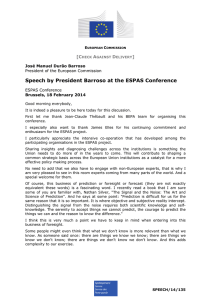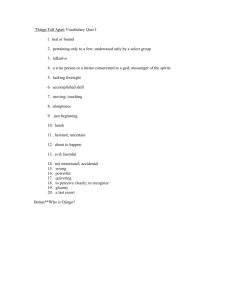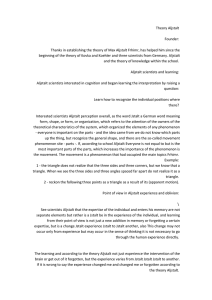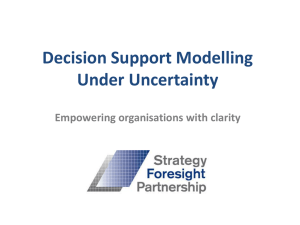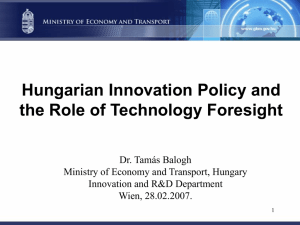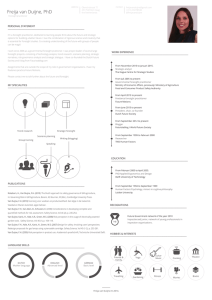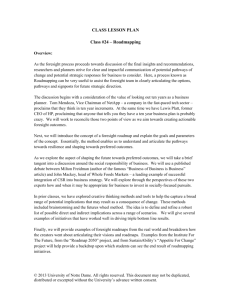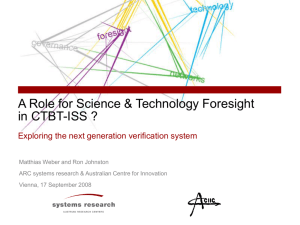Three Eras of Technology Foresight
advertisement
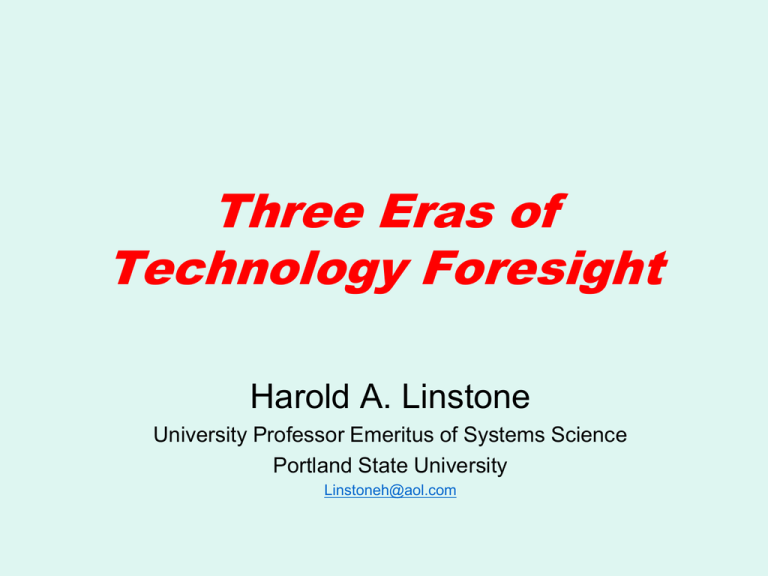
Three Eras of Technology Foresight Harold A. Linstone University Professor Emeritus of Systems Science Portland State University Linstoneh@aol.com TECHNOLOGY The Agricultural Era U.S. farm labor force 1790: 90%; 1970 4% 1. The Industrial Era 2. The Information Era 1800-1970 1970-2024 Computers Communications Networks 3. The Molecular Era 2024-2080 Biotechnology Nanotechnology Materials Science K WAVES 1800-2025 Glocalization • Media Local facebook, desktop publishing Global CNN, giant media conglomerates • Technology Distributed (internet) • Religion Centralized (coal, oil, nuclear energy) small sects quasi-global “Islamic nation” individual can incite protests “Everyman as Faust” social networks can rapidly spread and amplify local to global scale tribalism, separation integration (EU) • Conflict • Governance • Corporations product customization – in sales: Amazon, Netflix - in manufacturing.: 3D printing global markets -McDonald, Starbucks New Concepts 1. Complexity science –> nonlinear complex adaptive systems (CAS) Phase states: stable, stably oscillating, chaotic with predictable boundaries, and unstable Many interacting elements (agents), simple rules agents interact locally (cooperating/competing) -> their behavior cannot be decomposed result: self-organizing patterns and emergence A cascade of S curves representing major technological shifts New Concepts 2. Multiple perspectives To bridge the gap between models and the real world T: the technical perspective O: the organizational/institutional perspective P: the personal/individual perspective Each offers insights not attainable with the others. O and P vital for link to action. World view T O P science/technology group/institution individual, self problem solving process, action power, prestige Ethical basis objectivity Mode of inquiry analysis observation cause - effect Planning horizon far - no discounting fairness, justice morality satisficing bargaining agenda intuition learning challenge - response Uncertainty view uncertainties noted moderate discounting high discounting for most uncertainties used aversion to uncertainty Risk criteria logical soundness political acceptability aversion to loss Scenarios exploratory preferable visionary A Comparison of Eras 4th to 5th peak 5th to 6th peak Overarching technologies Major paradigm shift Management Information Communication Time as critical dimension Nanotechnology Biotechnology Molecular scale Nanomaterials Glocalization Virtual corporations Adaptive enterprise Self-assembly Energy source Industrial commodity Nanoenabled energy Chemical Silicon, software Home health care Genome based medicine Threats Nuclear, cyberwar GNR-related risks Four Characteristics • 1. Pervasive, small an invisible technical infrastructure • 2. Unlimited reach IT > everything becomes information MT > everything controllable at the molecular level + • 3. Specificity MT > custom tailored materials, drugs and sensors • 4. Engineering for the human mind as well as the body IT, MT > prostheses to extend capabilities implantable biocomputers (“molecular doctors”) IT + MT: Impacts on TFA • CAS phase states– chaos: forecast limits. emergence • TOP: O and P essential Technology-based to science-based foresight Traditional to biology-based foresight Exploratory to normative foresight Foresight to rapid adaptability and robust planning IT and MT Eras: More implications Governments becoming unmanageable-> The social rate of change may for a while be faster than the technological rate Need to rebalance globalization localization centralization decentralization Need to balance perspectives
